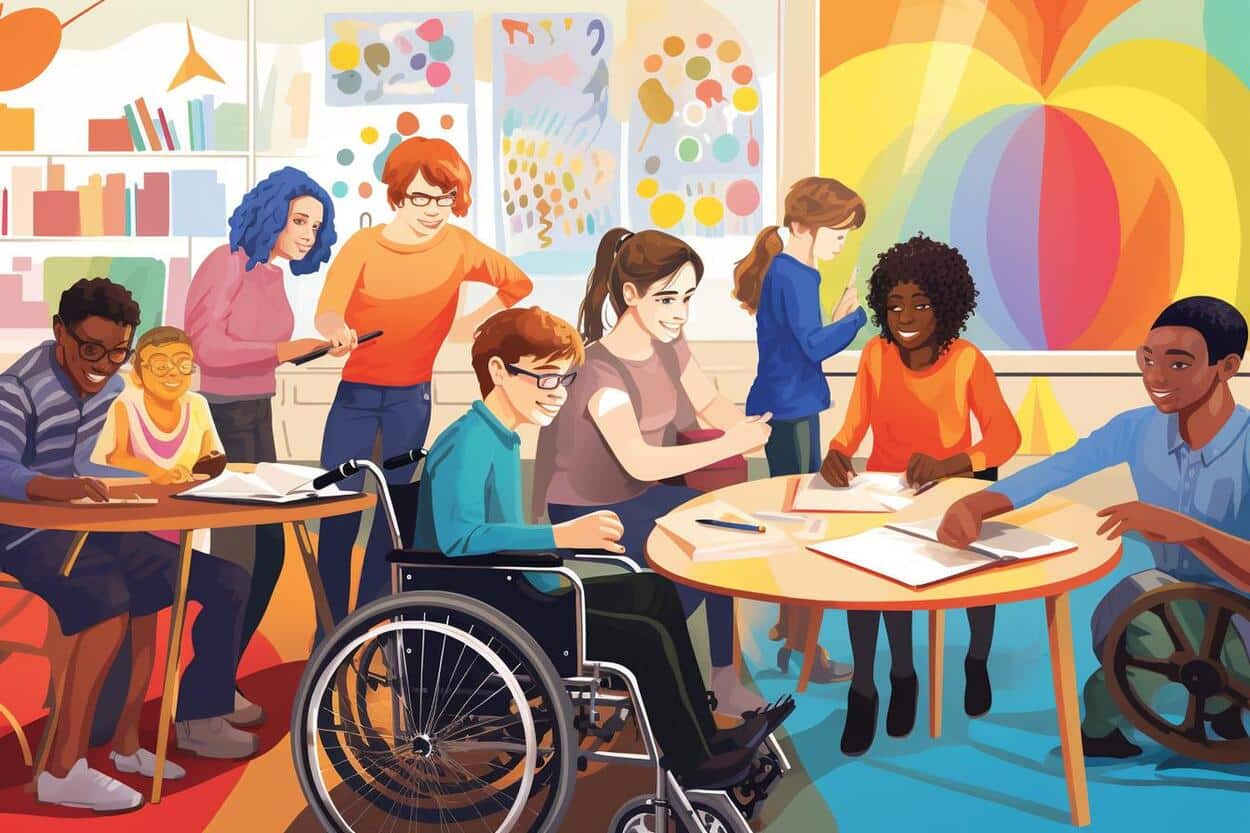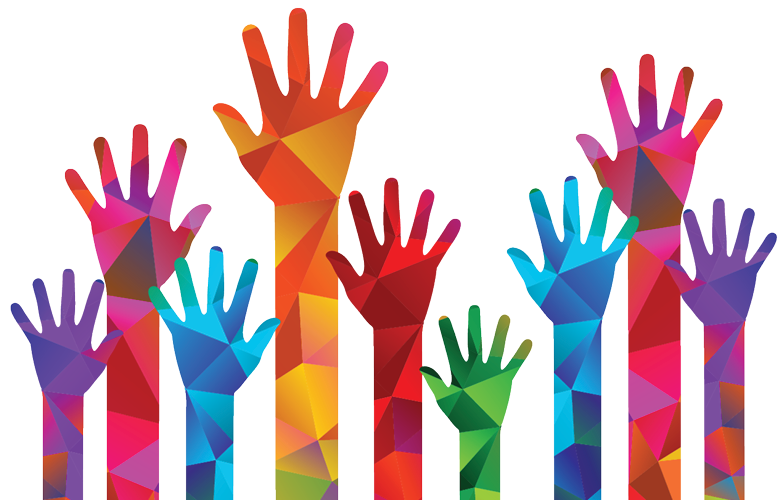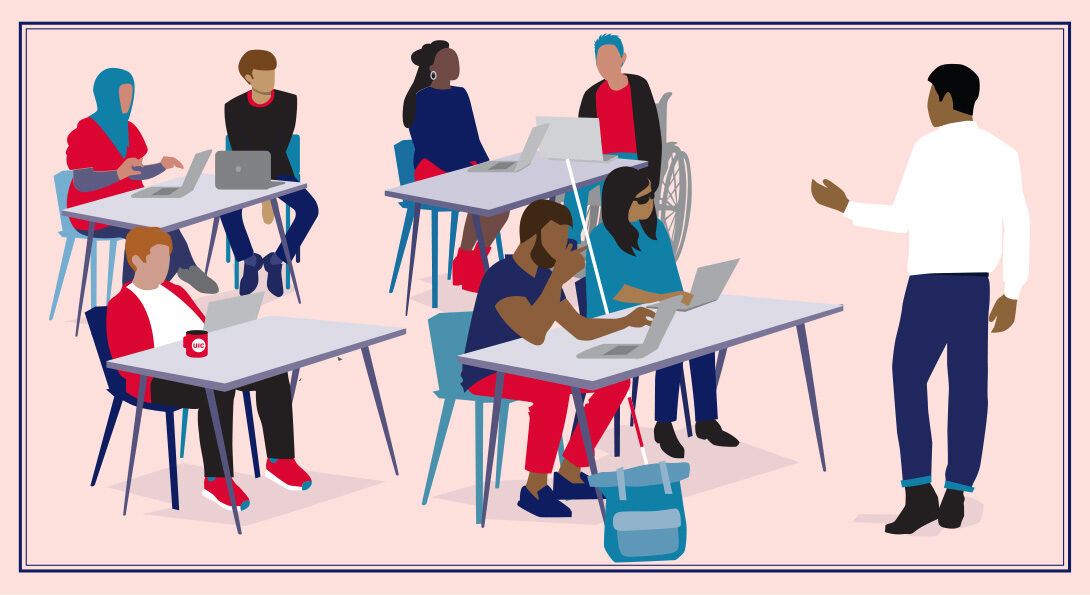inclusive education is about ensuring that all students, regardless of their abilities or backgrounds, have the opportunity to learn and thrive together in the same classroom. At kienhoc.vn, we believe in the power of inclusive education to create a more equitable and just society. This article will explore the core principles of inclusive education, its benefits for all learners, and the challenges and solutions involved in creating truly inclusive classrooms.

Understanding Inclusive Education
Inclusive education is like a big playground where everyone gets to play together, no matter what their differences are. It means that kids with disabilities learn alongside kids without disabilities in the same classroom. Everyone gets the support they need to learn and grow.
Imagine a classroom where some kids use wheelchairs, some have trouble speaking, and some learn in different ways. In an inclusive classroom, everyone is welcome and respected. Teachers adapt their lessons to make sure all students can participate and learn. For example, a teacher might use pictures and gestures to help a student who has difficulty understanding spoken words.
“The power of inclusive education lies in its ability to create a sense of belonging for all students.” – Unknown
Inclusive education is not just about academics; it’s also about social skills and friendships. When kids with and without disabilities learn together, they learn to understand and appreciate each other’s differences. They build friendships and support each other.

Benefits of Inclusive Education
Inclusive education has many benefits for all students, not just those with disabilities. It helps create a more welcoming and supportive learning environment for everyone. Students learn to appreciate and respect differences, which is important for building a more inclusive society. They also develop empathy and understanding for others.
Inclusive classrooms can also boost academic achievement for all students. When teachers adapt their lessons to meet the needs of diverse learners, everyone benefits. Students without disabilities can learn from their peers with disabilities, and vice versa. This can lead to a deeper understanding of the material and improved problem-solving skills.

Challenges and Solutions in Inclusive Education
While inclusive education offers many benefits, it also comes with some challenges. One challenge is making sure that teachers have the training and resources they need to support all learners. It takes time and effort to adapt lessons and create a classroom where everyone feels included.
Another challenge is changing attitudes and beliefs about disability. Some people still think that kids with disabilities can’t learn as well as other kids. This is not true! With the right support, all kids can learn and succeed.
Overcoming Challenges Together
To overcome these challenges, schools and communities need to work together. Teachers can learn more about special education and how to adapt their lessons for different learners. Schools can provide resources and support for teachers, such as extra staff or specialized materials.
We can all help to change attitudes about disability by talking about it openly and honestly. We can learn about different disabilities and how they affect people. We can also celebrate the strengths and abilities of people with disabilities.
| Challenge | Solution |
|---|---|
| Lack of teacher training | Provide professional development opportunities for teachers |
| Limited resources | Allocate funding for specialized materials and support staff |
| Negative attitudes about disability | Promote awareness and understanding of disability |

Creating an Inclusive Classroom
Creating an inclusive classroom takes effort and planning, but it’s totally worth it! It’s all about making sure every student feels welcome, valued, and able to learn. Here are some ways to make your classroom a place where everyone belongs:
Building a Welcoming Environment
Start by getting to know your students and their unique needs. Some students might need extra help with reading or writing, while others might need more time to finish tasks. That’s okay! Figure out what each student needs to succeed and provide the right support.
Make sure your classroom is accessible for everyone. This means having ramps for wheelchairs, desks that can be adjusted, and materials in different formats, like large print or audiobooks. You can even have a cozy corner with beanbag chairs and fidget toys for students who need a break.
“Inclusion is not a matter of charity, it is an act of justice.” – Unknown
Fostering Collaboration and Respect
Encourage students to work together on projects and activities. This helps them learn from each other and build friendships. You can also create a “buddy system” where students partner up to help each other out.
Talk about respect and kindness in your classroom. Teach students how to appreciate each other’s differences and celebrate diversity. You can read stories about people with disabilities or have students share their own experiences.
- Celebrating and Participating in Special Education Week
- Unlocking the Power of ABA Therapy in Special Education

Final Thought
Inclusive education is a journey, not a destination. By embracing its principles and actively working to overcome challenges, we can create learning environments where every student feels valued, respected, and empowered to reach their full potential. Let’s continue to advocate for and build a more inclusive future for education, where diversity is celebrated and all learners can flourish.




